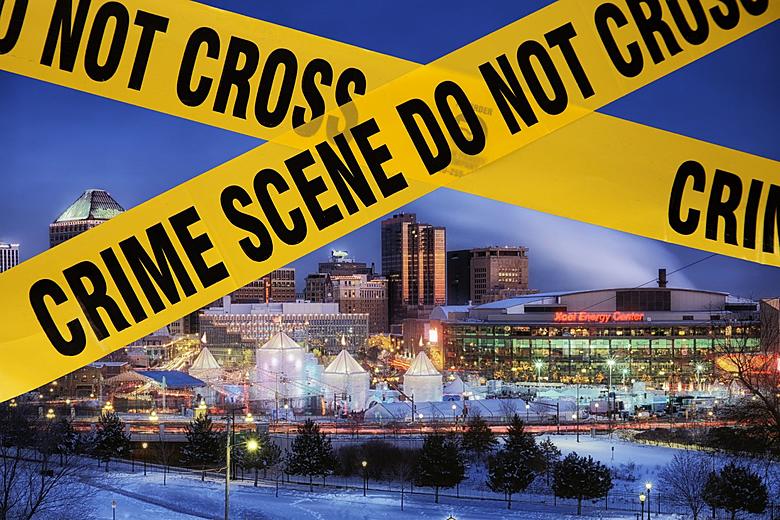Living in a safe neighborhood is a fundamental need. It shapes our quality of life, our sense of security, and our overall well-being. Minnesota, known for its natural beauty and friendly communities, also grapples with areas experiencing higher crime rates. This blog aims to empower you with knowledge by exploring the 5 most dangerous neighborhoods in Minnesota, based on crime data.
Before diving in, it’s crucial to understand how we define “dangerous.” Crime rates are a significant factor, and we will rely on data from reputable sources like the FBI’s Uniform Crime Reporting (UCR) program. This data includes violent crimes (murder, rape, robbery, aggravated assault) and property crimes (burglary, larceny-theft, motor vehicle theft).
Bemidji
Nestled in northern Minnesota, Bemidji boasts stunning lakes and a vibrant arts scene. However, crime statistics paint a different picture. Bemidji holds the dubious honor of being the most dangerous city in Minnesota according to a 2023 study by Area Vibes, which analyzed FBI data. The report revealed that Bemidji’s violent crime rate is a staggering 76.6% higher than the national average. Additionally, the Road Snacks report highlights Bemidji’s high property crime rate, with residents facing a 1 in 12 chance of being a victim. Aggravated assaults are particularly concerning, occurring more than once a week on average.
Several factors might contribute to Bemidji’s crime rates. Socioeconomic issues like poverty and lack of opportunity can create an environment where crime becomes more prevalent. Additionally, Bemidji’s location as a tourist destination can attract transient populations or petty crime.
Safety Tips for Bemidji Residents and Visitors:
- Increase awareness: Stay alert in your surroundings, especially at night.
- Secure your property: Lock doors and windows, install security systems if possible.
- Be cautious with valuables: Don’t leave belongings unattended in public places.
- Trust your gut: If a situation feels unsafe, remove yourself.
- Report suspicious activity: Contact law enforcement if you witness a crime.
Minneapolis
As Minnesota’s largest city, Minneapolis faces complex challenges regarding crime. Specific neighborhoods within Minneapolis are known for higher crime rates. Midtown Phillips and East Phillips consistently rank among the most dangerous. According to AreaVibes, these neighborhoods experience violent crime rates over 200% higher than the national average. Property crimes are also a concern.
Despite these challenges, Minneapolis is actively working towards a safer future. Community engagement initiatives, increased police presence in high-crime areas, and investment in social programs are some efforts underway.
St. Paul
The capital city of Minnesota, St. Paul, also has areas struggling with crime. Similar to Minneapolis, specific neighborhoods experience higher rates of violent crime and property crime.
While acknowledging these challenges, it’s important to note that St. Paul has implemented various crime reduction strategies. These include targeted patrols in high-crime areas, collaboration between law enforcement and community organizations, and programs focused on youth development and crime prevention.
Waite Park
Waite Park, a smaller city situated near St. Cloud, might be a surprising addition to this list. However, crime data reveals a different story. Waite Park experiences property crime rates exceeding the national average. Additionally, violent crime rates, while lower than some other entries on this list, are still a cause for concern.
Waite Park’s proximity to a larger city like St. Cloud could be a contributing factor. Residents of Waite Park should take precautions to safeguard their homes and belongings.
Safety Tips for Waite Park Residents and Visitors:
- Invest in home security: Consider installing a security system or visible deterrents like security cameras.
- Get to know your neighbors: Building a sense of community can be a powerful crime deterrent.
- Be mindful of nighttime activity: Extra caution is advisable when walking or driving alone at night.
- Report suspicious activity to the police: Don’t hesitate to report anything that seems out of the ordinary.
Fridley
Located in the Twin Cities metro area, Fridley experiences crime rates exceeding the national average. Property crimes, particularly larceny-theft, are a significant concern. Factors like gang activity and drug trafficking might contribute to these crime rates.
Safety Tips for Fridley Residents and Visitors:
- Park in well-lit areas: Avoid leaving your car unattended in dark or secluded locations.
- Be aware of your surroundings: Trust your instincts and avoid potentially dangerous situations.
- Report suspicious activity to the police: Working together with law enforcement is crucial for maintaining a safe community.
Conclusion
This blog explored the 5 most dangerous neighborhoods in Minnesota based on crime data. It’s important to remember that crime rates can fluctuate, and localized statistics can vary within a particular neighborhood. Readers are encouraged to research specific neighborhoods they are considering.
Choosing a safe place to live is a vital decision. By staying informed and taking precautions, you can contribute to a safer community for yourself and your loved ones.
There are numerous resources available to help improve safety in our neighborhoods. Community watch programs, crime prevention workshops, and hotlines for reporting suspicious activity are some starting points. Working together, we can create a safer Minnesota for everyone.
Have you lived in any of the neighborhoods mentioned in this blog? Share your experiences or ask questions in the comments section below.
Additionally, here are some helpful resources for crime prevention and community safety initiatives in Minnesota:
- Minnesota Office of Crime Prevention (https://dps.mn.gov/Pages/default.aspx)
- Minneapolis Police Department Crime Prevention Tips (https://www.minneapolismn.gov/resident-services/public-safety/prevent-prepare/crime-prevention/)
- St. Paul Police Department Community Engagement Programs (https://www.stpaul.gov/departments/police/administration-office-chief/community-engagement-division)
Remember, staying informed and taking proactive steps is key to creating a safe and secure environment for yourself and your community.



